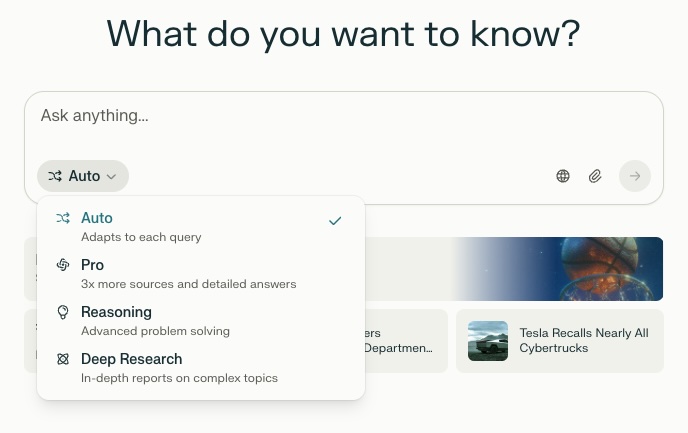
Table of Contents
In this article we explain how to use Perplexity AI and DeepSeek to find content gaps. This technique works to boost your SEO and to target competitive keywords.
Understanding Content Gaps
Before we get into how to uncover content gaps, let’s clarify what they are.
Content gaps are missing pieces of information on topics that are being searched for, but not adequately addressed. These areas represent opportunities for you to fill a void, and offer unique content where others have not.
Filling these gaps also aligns your content with user search intent and increases your authority on a subject. This in turn, improves your chances for better search engine rankings.
Plus, by focusing on topics that lack sufficient coverage, you also position your website as an authoritative source, which also helps attract organic traffic.
How Perplexity and DeepSeek Work
Perplexity has integrated DeepSeek into its architecture. Previously accessible via a separate button, DeepSeek is now part of Perplexity’s reasoning and deep research models.
DeepSeek uses real-time data to identify search trends, which allows you to understand what content is available and, more importantly, what’s missing around a topic.

Prompts to Find Content Gaps Using Perplexity and DeepSeek
Define Your Niche and Target Audience
- Goal: Clearly define the subject area you’re interested in and who you’re trying to reach.
- Sample Prompt: “I’m focusing on the niche of [topic]. My target audience is [target audience].”
Brainstorm Core Topics and Keywords
- Goal: Identify the main themes and search terms related to your niche.
- Sample Prompt: “What are the most common unanswered questions about [topic] in [year]?”
Explore Existing Content Landscape
- Goal: Understand what information is already available on your topics.
- Sample Prompts:
- “What are the most popular articles and videos about [topic]?”
- “Summarize the key information covered in the top 5 search results for [topic].”
- “What are the common questions addressed in online forums related to [topic]?”
Identify Emerging Trends
- Goal: Discover emerging areas of interest around your topic.
- Sample Prompt: “What are the emerging trends in [topic] that are not yet widely discussed?”
Identify User Questions and Pain Points
- Goal: Uncover unique questions and challenges your target audience faces.
- Sample Prompts:
- “What are the most frequent questions people ask about [topic]?”
- “What are the common problems beginners encounter when starting [topic]?”
- “What are the biggest frustrations people have with [topic]?”
Check for Search Volume and Competition
- Goal: Understand the demand for content on your niche.
- Sample Prompts :
- “Analyze the top 10 search results for [topic] and identify potential low competition keywords.”
- “Based on keyword research, what are the most promising content opportunities within the [topic] niche?”
Analyze Emerging Trends
- Goal: Stay up-to-date with the latest information and identify new areas of interest.
- Sample Prompts:
- “What are the latest research findings on [topic]?”
- “What are the emerging technologies related to [topic]?”
- “What are the trending discussions on social media about [topic] right now?”
- “What are the news stories from the last week regarding [topic]?”
Analyze Social Media Discussions
- Goal: Gather data on trending social media questions about your topic.
- Sample Prompt: “What are the trending discussions on social media about [topic] right now?”
Analyze Research Findings Around a Topic
- Sample Prompt: “What are research findings on [topic] and what are the key takeaways?”
Identify Misconceptions Around a Topic
- Goal: Pinpoint areas where information is incomplete, inaccurate, or confusing.
- Sample Prompts:
- “What are the common misconceptions about [topic] for beginners?”
- “What are the unanswered questions surrounding the topic of [topic]?”
Explore Regional Differences Around a Topic
- Goal: Gain insights into how searches on your topic varies across regions.
- Sample Prompt: “What are the regional differences in how [topic] is approached?”
Develop Content Ideas From Research
- Goal: Organize your research and create a plan for addressing the identified content gaps.
- Sample Prompt: “Based on the information gathered, generate 10 unique content ideas that address the content gaps in [topic].”
Conclusion
By using these prompts in combination with Perplexity and DeepSeek, you can find unique content gaps and create unique content for your audience. This method paves the way for growing organic traffic by covering topics that others have overlooked.
Related Topics:
- How to Use Perplexity and DeepSeek to Find Content Gaps
- How to Create SEO content with Perplexity and DeepSeek
- How does NeuronWriter help in organizing content by topic clusters?
- How to Identify Content Gaps Using Perplexity Pro with DeepSeek
- Transform YouTube Videos into SEO Blog Content with Descript and ChatGPT
- How to Find ‘People Also Ask’ Questions for Semantic SEO
- How to Use Perplexity to Answer ‘People Also Ask’ (PAA) Questions for Semantic SEO
- Writing SEO Content with Perplexity AI and NeuronWriter
- Mastering SERPs: How to Use NeuronWriter for SERP Analysis
- How to Analyze the Top 30 Competitors for Your Chosen Keywords Using NeuronWriter SERP Analysis